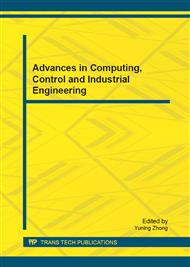p.9
p.15
p.20
p.25
p.30
p.34
p.39
p.45
p.49
Study on Characteristics of Gas Flow Pressure in Catalytic Converter with Porous
Abstract:
This paper studies the different porosity of porous medium how to affect the flow pressure field under the conditions of same inlet velocity and fiber diameter by CFDmethod. Geometric model of the catalytic converter has been established and meshed by the pre-processing tool of FLUENT. The flow pressure simulation filled contours and the curve of center line static pressure distribution of the fiber porous material show that in the case of other conditions remain unchanged, the less the porosity of the fiber porous material, the higher the inlet pressure and the more the pressure loss of the porous material. The more porosity of fiber is beneficial to exhaust catalytic reaction.
Info:
Periodical:
Pages:
30-33
Citation:
Online since:
November 2012
Authors:
Keywords:
Price:
Сopyright:
© 2012 Trans Tech Publications Ltd. All Rights Reserved
Share:
Citation:


